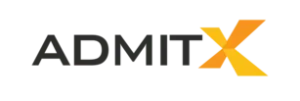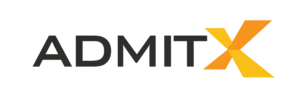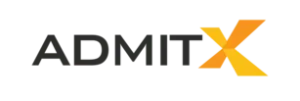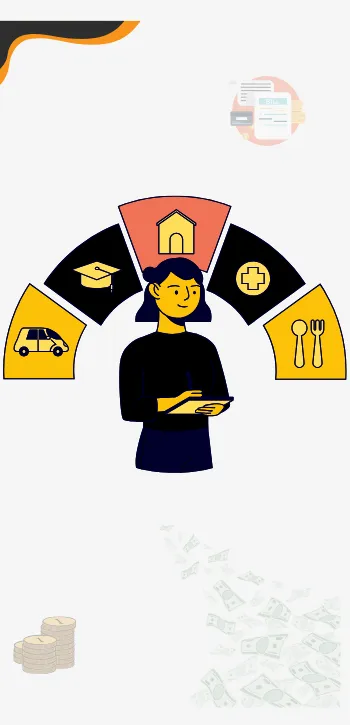If you are considering starting or continuing your higher studies in Canada, the following questions might come to mind: When should you apply for courses, and which intake is best for you? The academic calendar in Canadian universities and colleges begins in September every year.
Canadian institutes also offer admissions during winter and summer intakes, which commence in January and May, respectively. This blog will guide you through each study intake in Canada, along with their benefits, available courses, and application process.
How many Study Intakes in Canada?
An academic year in Canada is divided into three semesters or intakes.
- Fall or September Intake
- Winter or January Intake
- Summer or May Intake
These intakes are named after the season or month in which they commence. While fall intake is the primary intake, winter and summer intakes are known as secondary and tertiary intakes, respectively.
| Intakes | Application Cycle | Class Commencement |
|---|---|---|
| Fall (September) | September/October 2024-March 2025 | September 2025 |
| Winter (January) | September-December 2024 | January 2025 |
| Summer (May) | October 2024-February 2025 | May 2025 |

Fall Intake in Canada
- As discussed above, the fall intake is the primary intake of the admission cycle in Canada because it marks the beginning of an academic year.
- For this intake, almost all Canadian universities and colleges open their application window for all types of academic programs.
- These programs are available at bachelor’s, master’s, and doctoral levels.
- Even short-term courses and diploma programs are also available during this intake.
Benefits of Fall Intake in Canada
- Top-class and popular universities in Canada prioritise this intake by providing international students with diverse options of undergraduate, postgraduate, doctoral, diploma, and certificate programs.
- The fall intake aligns with the academic calendar of most countries, allowing applicants to make the transition smoothly from secondary school or college.
- The September or fall intake in Canada witnessed a higher enrollment rate, providing a larger class size and better networking opportunities.
- During September, the weather in Canada is pleasant and warm, which is suitable for the students to adjust to the environment.
- Indian students get enough time to progress in an academic year, allowing them to gain significant knowledge and experience.
Commencement of Fall Intake in Canada
The fall intake or September intake lasts between September and April every year, followed by the internships and 4 months of summer break, during which students can pursue part-time work opportunities, dedicating their full-time efforts to gaining valuable work experience.
Fall Intake in Canada: Popular Institutes
Below is a table highlighting popular Canadian universities offering admission in the fall intake across a diverse range of programs, along with their QS world university rankings 2025 and application deadlines.
| University | QS World University Rankings 2025 | Application Deadlines for Fall Intake 2025 |
|---|---|---|
| University of Toronto | 25 | 15th January 2025 |
| McGill University | 29 | 15th January 2025 |
| University of British Columbia | 38 | 15th January 2025 |
| University of Alberta | 96 | 01st March 2025 |
| University of Waterloo | 115 | 31st January 2025 |
| Western University | 120 | March 2025 (depends on courses) |
Available Programs in the Fall Intake 2025
The following courses are offered during the fall intake in Canada.
- Accounting & Finance
- Business Management
- Commerce
- Computer Science
- Engineering & Technology
- Forensic Sciences
- Humanities
- Psychology
- Social Sciences
- Visual Arts
Winter Intake in Canada
Winter intake in Canada is also known as secondary intake, which often begins in January each year. Like fall intake, international students also get opportunities to explore the diverse range of academic programs, but with fewer options.
Benefits of Winter Intake in Canada
- This intake is exclusively for those applicants who either missed the fall intake or prefer to start their studies in the winter.
- Compared to the fall intake, the number of applications for the January intake in Canada is generally lower, resulting in less competition. This increases their chances of acceptance.
- The average duration of the study programs in the winter intake is relatively shorter than the fall intake, which allows students to complete their courses in less time and take advantage of internships and part-time work opportunities.
- Students find less distraction and can be more focused on their academic experience.
- In winter intake, some professional development courses are also offered by the universities, which provides significant advantages to working professionals desiring to strengthen their skills.
Commencement of Winter Intake in Canada
The winter or January intake lasts between January and April and May every year, followed by the internships and a 3-4-month long summer break. Students can pursue internships and part-time work to enhance their skills and expertise during this period.
Winter Intake in Canada: Popular Institutes
Below is a table highlighting popular Canadian institutes offering admission in the winter intake, along with their QS world university rankings 2025 and application deadlines.
| University | QS World University Rankings 2025 | Application Deadlines for Winter Intake 2025/2026 |
|---|---|---|
| McGill University | 29 | 01st August 2025 |
| University of Ottawa | 189 | 18th October 2024 |
| Queen’s University at Kingston | 193 | 24th November 2024 |
| Lambton College | - | 31st July 2025 |
| Douglas College | - | 01st December 2025 |
| University of British Columbia | - | 24th October-31st October 2024 |
Available Programs in the Winter Intake 2025
The following courses are offered during the winter intake in Canada.
- Accounting & Finance
- Arts & Culture
- Business Management
- Commerce
- Childcare Studies
- Computer Sciences
- Humanities
- Psychology
- Social Sciences
- Visual Arts
Summer Intake in Canada
The summer intake is the least common study intake in Canada, which offers only certificates, diplomas, and bridge courses. As compared to fall and winter intake, summer intake is less popular for pursuing regular degree programs. Some Canadian institutes, such as the University of Ottawa, do not offer admission to international students.
Benefits of Summer Intake in Canada
- Students can pursue bridge courses or foundation programs relevant to their regular study programs to gain a significant understanding of the subjects.
- Summer intake in Canada allows international students to get familiar with the local environment, community, and everyday life before starting their main study course in fall intake.
- Summer intake also facilitates students to pursue vocational courses and diploma programs relevant to their field of interest, which are not otherwise available in other intakes.
Commencement of Summer Intake in Canada
Summer intake in Canada usually begins around May and concludes in August/September every year.
Summer Intake in Canada: Popular Institutes
Below is a table highlighting popular Canadian universities offering admission in the summer intake, along with their QS world university rankings 2025 and application deadlines.
| University | QS World University Rankings 2025 | Application Deadlines for Summer Intake 2025 |
|---|---|---|
| University of Calgary | 198 | 01st March 2025 |
| University of Manitoba | 661 | 01st November 2024 |
| Carleton University | 741 | 01st March 2025 |
| Trent University | - | 15th January 2025 |
| University Canada West | - | 26th May 2025 |
| University of British Columbia | - | 15th January 2025 |
Available Programs in the Summer Intake 2025
The following courses are offered during the summer intake in Canada.
- Diploma and Advanced Diploma Programs
- Hospitality and Tourism Management
- Graphic Design
- Early Childhood Education
- Automotive Technology
- Arts & Culture
- Language courses such as English as a Second Language (ESL) and French language
- Short-Term Certifications such as
- Cybersecurity
- AI and Machine Learning
- Healthcare Administration
- Construction Management
- Pre-master’s programs
- Co-op and Work Integrated Learning programs
Factors to Consider while Choosing an Intake in Canada
The following factors should be considered while choosing a study intake in Canada.
Availability of Programs
Check whether your desired study program is available during your chosen intake. Visit the official websites of the Canadian institutes and verify the availability of your chosen program to make it easier for you to select the suitable intake.
| Intake | Availability of Programs |
|---|---|
| Fall | All programs are available (UG, PG, Diploma, etc.) |
| Winter | Only selected programs are available (depending on the university) |
| Summer | Short-term courses like certificate courses, diploma, and advanced diploma programs are available |
Competition Level
- Depending on your application profile, you can choose either fall or winter intake to pursue the regular study programs.
- While the competition level for the fall intake is very high and tough due to the large number of applicants, it is relatively moderate for the winter intake, which can increase your chance of acceptance.
Academic Requirements
- If your chosen course or field of study differs from the one you pursued earlier, you must complete the foundation course or bridge course to fill the knowledge gap.
- You can pursue bridge courses during summer intake before starting the main study program to save yourself crucial time.
Internships and Job Opportunities
- Research the hiring trend and productivity of the industries during different seasons to make decisions on choosing the particular intake.
- This is so because during winter and summer seasons, hiring may go down because of extreme weather conditions, reduced workforce availability, and holidays.

Key Takeaways by AdmitX
While planning to study in Canada, it is very important to select the right intake that perfectly aligns with your academic and professional goals. The fall and winter intakes are two popular intakes in Canada that offer a diverse range of academic programs.
However, their preference might depend on the applicants and the availability of the particular course. Summer intake is best known for offering short-term courses that are beneficial to inculcate vocational skills.
FAQs
Why is May intake not preferred in Canada?
May intake is preferred in Canada by those applicants who want to pursue bridge courses and short-term programs to get ready academically before starting their main study programs in the fall intake.
Which intake is best for pursuing regular study programs in Canada?
The fall intake is widely regarded as the best intake for pursuing regular study programs in Canada because of the availability of a maximum number of programs, scholarships, and internship opportunities.
How many intakes are there in Canada?
There are 3 study intakes in Canada. They are fall intake (September intake), winter intake (January intake), and summer intake (May intake).
When should you apply for winter intake in Canada?
The application process for winter intake in Canadian institutes lasts between October and December every year. You can apply for winter intake during these months.
When to apply for fall intake 2025?
The application process for fall intake 2025 is currently ongoing and concludes in March 2025. Reach out to AdmitX for personalised end-to-end assistance on admission for fall intake.















